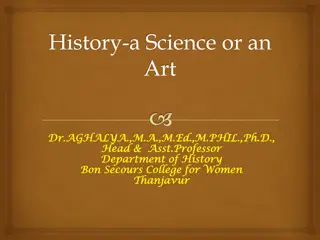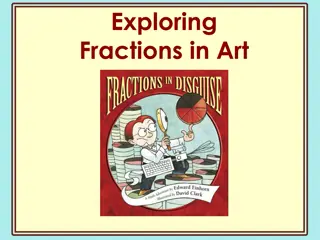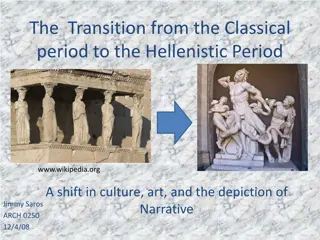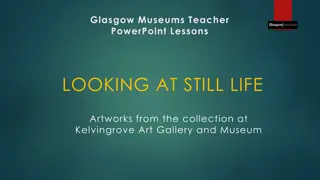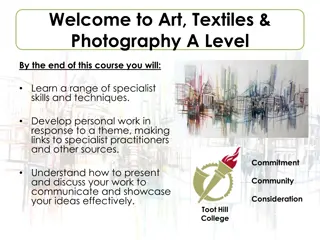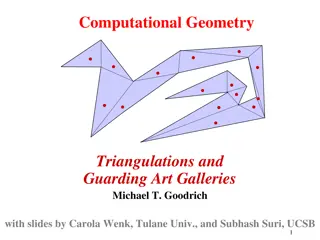Exploring the Art of Metalsmithing: Techniques and History
Delve into the world of metalsmithing, where artisans craft intricate jewelry and precision parts using various metals. Discover the historical significance of smiths in pre-industrial times, the essential techniques like forging and soldering, and the specialized skills such as chasing and engraving. Learn about the finishing touches that give metalsmithed works their polished look, and the different types of metalsmiths ranging from jewelry makers to machinists. Uncover the artistry and craftsmanship behind this ancient practice.
Uploaded on Oct 03, 2024 | 0 Views
Download Presentation

Please find below an Image/Link to download the presentation.
The content on the website is provided AS IS for your information and personal use only. It may not be sold, licensed, or shared on other websites without obtaining consent from the author. Download presentation by click this link. If you encounter any issues during the download, it is possible that the publisher has removed the file from their server.
E N D
Presentation Transcript
Metalsmiths Julia Ivanovska Kristaps Karzubovs
History In pre-industrialized times, smiths held high or special social standing since they supplied the metal tools needed for farming (especially the plough) and warfare. This was especially true in some West African cultures.
WHAT IS METALSMITHING? Metalsmithing is creating jewelry through the manipulation of various metals.
Metalsmith needs to know manipulations or metalsmithing techniques including fabricating metal jewelry by forming and shaping it with hammers, mandrels, and other tools, sawing with a jeweler's saw or cutting with metal snips, doming with a metal dapping set, forging, fold forming, drilling holes for design elements or for use with cold connections such as rivets and screws, soldering, texturing metal with hammers and other metalsmithing tools, and metal stamping.
Other specialty metalsmithing techniques, that metalsmither need to know include chasing and repouss , etching and engraving, electroforming and electroplating, raising, swaging, reticulation, casting, and creating settings such as bezels.
All metalsmithers work should end with proper finishing techniques, such as filing, buffing, polishing, and then perhaps adding patinas with liver of sulfur and/or heat, if desired.
WHAT IS METALSMITH? The term, metalsmith, often refers to artisans and craftpersons who practice their craft in many different metals, including gold, copper and silver. Machinists are metalsmiths who produce high-precision parts and tools. The most advanced of these tools, CNC machines, are computer controlled and largely automated.
Jewelers often refer to their craft as metalsmithing, and many universities offer degree programs in metalsmithing, jewelry, enameling and blacksmithing under the auspices of their fine arts programs.







